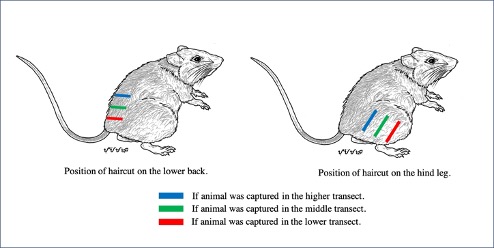VOLUME 14 NUMBER 1 (January to June 2021)

Philipp. Sci. Lett. 2021 14 (1) 51-64
available online: February 28, 2021
*Corresponding author
Email Address: aareginaldo@up.edu.ph
Date received: August 10, 2020
Date revised: December 21, 2021
Date accepted: February 19, 2021
ARTICLE
Malacofaunal diversity and distribution in the Masungi Georeserve in Luzon Island, Philippines
Aris A. Reginaldo*1 and Perry S. Ong†2
1College of Science, University of the Philippines Baguio,
Governor Pack Road, Baguio City, Benguet;
2Institute of Biology, College of Science,
University of the Philippines Diliman, Quezon City
Governor Pack Road, Baguio City, Benguet;
2Institute of Biology, College of Science,
University of the Philippines Diliman, Quezon City
Microhabitats occur as patches of conditions that offer various resources for small mammals. Studies have shown that microhabitat conditions influence local distribution patterns, but the extent to which small mammals in the Philippines are affected by microhabitat characteristics is unknown. This study sought to identify the characteristics of microhabitats and the patterns of microhabitat use by six small nonflying mammals (Apomys abrae, A. musculus, Rattus everetti, R. exulans, R. tanezumi, and Suncus murinus) in a disturbed landscape that consisted of 3 habitats (pine stand, regenerating montane forest, and agricultural area). We live-trapped small mammals and collected 23 habitat variables in 135 trapping stations. Trapping stations with captures exhibited higher soil moisture, higher rock cover, and lower Ayapana cover than those in stations without captures. Apomys abrae and R. everetti preferred areas with high tree cover but differed in their preferred type of forb cover. Rattus exulans and R. tanezumi were strongly associated with characteristics of open habitats but distinguished from each other by difference in preference for tree cover and ground steepness. Apomys musculus and S. murinus preferred similar areas, but the former was strongly associated with the high cover of Ayapana and the latter with a moderate slope and high soil moisture. Results suggest that the coexisting species may exhibit microhabitat-level selection, and this process may be considered as one factor that influences the spatial distribution of Philippine small nonflying mammals in disturbed landscapes. Future works that will employ a similar methodology can test and expound our findings.
© 2025 SciEnggJ
Philippine-American Academy of Science and Engineering